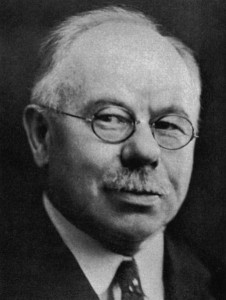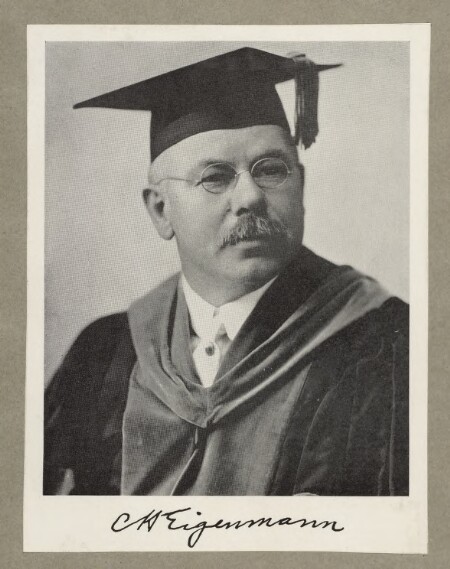Carl H. Eigenmann
Carl H. Eigenmann ( born March 9, 1863 in Flehingen, Oberderdingen, † April 24, 1927 in San Diego ) was a famous German - American ichthyologist who, along with his wife Rosa Smith Eigenmann several hundred species of fish, primarily from North Americas first described.
Eigenmann emigrated at the age of 14 years with his parents to Rockport, Indiana. After a few years, he enrolled at the University of Indiana, where he studied biology under David Starr Jordan. In 1886, Eigenmann received his bachelor's degree and went shortly thereafter to California, where he made the acquaintance of Rosa Smith, who had already gained through their work over the fish of the west coast some notoriety. On August 20, 1887, married and went together to Harvard University, where she studied the collections of Louis Agassiz and Franz Steindachner and wrote first common work.
In 1888, the couple went to San Diego, California, where Carl worked as a curator of a natural history society and thereby helped to establish the Biological Laboratory San Diego. In 1889, he received his Ph.D. in Indiana and took there in 1891 professor of zoology at. A year later, Albert Günther Carl Eigenmann funded first expedition to the North American West, where he gathered a large number of previously unknown species of fish. Following several expeditions to cave fish and salamanders of the caves followed in Indiana, Texas, Missouri and Cuba.
After Eigenmann had been in the years 1906 /07 Guest lecturer at the Albert -Ludwigs- University of Freiburg, he became in 1908 Dean of the Graduate School in Indiana. In the same year he secured from the Carnegie Museums of Pittsburgh, the support of a research trip to South America and broke in September 1908 Carnegie Expedition to British Guiana. He returned with 25,000 copies, which later formed the basis of 128 new species and 28 new genera. He made more trips to Colombia (1912 ) and the Andes (1918). During the years in Indiana intensively his wife Rosa worked with him, but she could this collaboration due to the five common children, of whom one was disabled and one possibly grew up in a home, not maintained.
Later, Carl Eigenmann wrote mainly reports of his expeditions and supported younger colleagues in the planning and implementation of their own explorations. In 1923 he was inducted into the National Academy of Sciences.
After he had suffered a stroke in 1927, the family returned to San Diego.
1970, a newly built student residence was named on the campus of Indiana University by Carl H. Eigenmann.
Selected Literature
- The leptocephalus of the American eel and other American leptocephali, CH Eigenmann et al, 1902
- The Freshwater Fishes of British Guiana, including a study of the ecological grouping of species, and the relation of the fauna of the plateau of hatof the lowlands, CH Eigenmann, 1912
- On Apareiodon, a new genus of fishes characid, 1916
- The fishes of Western South America. Part I, C. H. Eigenmann, 1922

.jpg)
.jpg/581px-Carl_H._Eigenmann_(1863-1927).jpg)
.jpg/220px-Carl_H._Eigenmann_(1863-1927).jpg)
.jpg/640px-Carl_H._Eigenmann_(1863-1927).jpg)
.jpg/75px-Carl_H._Eigenmann_(1863-1927).jpg)
.jpg/266px-Carl_H._Eigenmann_(1863-1927).jpg)
.jpg/440px-Carl_H._Eigenmann_(1863-1927).jpg)
.jpg/260px-Carl_H._Eigenmann_(1863-1927).jpg)

